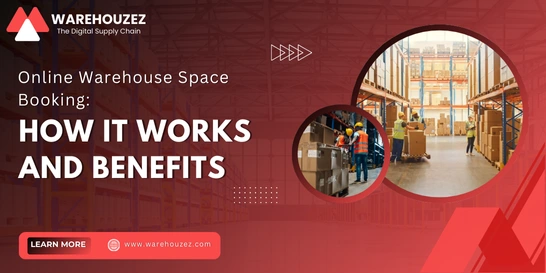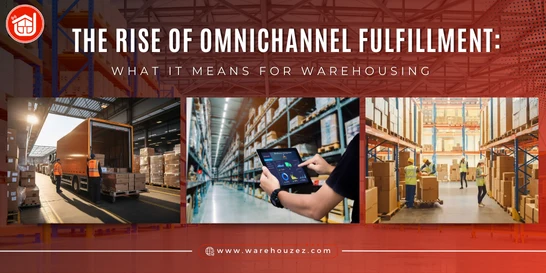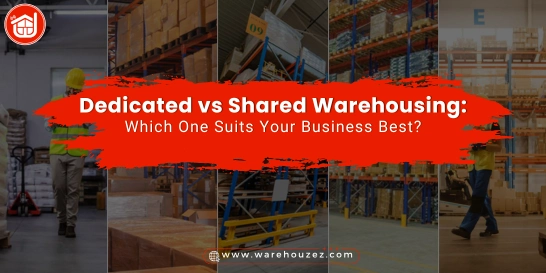The Impact of E-Commerce Growth on Warehousing and Distribution Operations
The Impact of E-Commerce Growth on Warehousing and Distribution Operations
In recent years, the retail landscape has undergone a significant transformation with the rapid rise of e-commerce. Now, more than ever, consumers are embracing the convenience of online shopping, opting to purchase products from the comfort of their homes. With this shift in consumer behaviour, the e-commerce sector has experienced exponential growth, reshaping the way we buy and sell goods. However, to ensure seamless e-commerce fulfillment operations, warehousing and distribution services are essential. These specialized services help in the efficient storage, processing, and delivery of orders to customers' doorsteps.
In this particular blog post, we will explore the powerful impact of e-commerce growth on warehousing and distribution operations. So, let's get started!
The Expansion of E-Commerce
There's no denying the fact that the expansion of e-commerce has been remarkable in recent years. With the popularity of online shopping, consumers are certainly drawn to the comfort and convenience it offers. Gone are the days of long queues in crowded stores; now, people can browse and buy goods from the comfort of their own homes with just a few clicks. There are several factors that contribute to this paradigm shift in consumer behaviour. First and foremost, technological advancements have made online shopping easier, faster, and more secure. Additionally, changing consumer preferences have played a prominent role, as people seek out easy solutions to meet their shopping needs. Moreover, the growing demand for online shopping options has further fueled the growth of e-commerce, with businesses racing to meet the ever-increasing market demand for digital shopping experiences.
Importance of Warehousing and Distribution in E-Commerce
Without a doubt, warehousing and distribution are essential components of order fulfillment operations. Warehouses provide secure spaces for storing a variety of products until they are shipped to customers. Moreover, warehouses offer strategic advantages to businesses by allowing them to store inventory closer to their customer base, enabling faster delivery times and reduced shipping costs. Efficient distribution networks further enhance the customer experience by streamlining order fulfillment and expediting the shipping process. This, in turn, contributes to greater levels of customer satisfaction as well as retention.
Key Functions of Warehouses in E-Commerce Fulfillment Operations
Let's take a quick look at the key functions of warehouses in ensuring efficient e-commerce fulfillment operations:
1. Inventory Handling:
Managing, organizing, and tracking stock levels for accurate counts and easy retrieval.
2. Warehouse Management
Optimizing end-to-end warehouse management operations, from receiving and inventory handling to e-commerce logistics and order fulfillment.
3. E-Commerce Logistics
Handling incoming shipments from suppliers and outgoing shipments to customers.
4. Order Fulfillment
Picking, packing, processing, and shipping orders to the end-consumers on time.
Impact on Warehousing Operations
Let's explore the powerful impact of e-commerce expansion on warehousing operations:
Increased Demand for Warehouse Space
With the surge in online shopping, there is a heightened demand for warehouse space to accommodate the growing inventory levels. Online businesses require larger storage facilities to store a diverse range of products and maintain sufficient stock levels to meet customer demands. To address this increasing need, warehousing companies are expanding their operations and situating warehouses in prime locations.
Shifts in Warehouse Location Strategies for Faster Shipping
Customers expectations for faster delivery times are increasing day by day. To meet the expectation of faster shipping times, warehousing companies are strategically locating warehouses closer to major population centers and transportation hubs. By choosing warehouses in prime locations, companies can minimize transit times and shipping costs, thus enhancing the overall customer experience. This shift in location strategies requires careful consideration of factors such as access to distribution networks, proximity to customers, and space availability. Let's understand this better with the help of an instance: if you operate in Jaipur, then search for a warehouse in Jaipur near your customer base. This will give you easier access to distribution networks, ensure safe storage, and optimize order fulfillment process.
Adoption of Warehouse Technology
To cope with the increased volume of orders and streamline operations, e-commerce warehouses are embracing warehouse technology. Automated systems, such as robotic pickers, conveyor belts, and sorting machines, help optimize warehouse processes and increase operational efficiency. Additionally, warehouse management software helps automate day-to-day repetitive tasks and offers real-time visibility into inventory levels, order statuses, and shipments. This way, warehouses can reduce labor costs, minimize errors, and improve order accuracy, leading to faster order processing and fulfillment. Impact on Distribution Operations Let's delve deeper into the profound impact of e-commerce development on distribution operations:
Increased Demand for Last-Mile Delivery Solutions
As e-commerce continues to expand, there is a heightened demand for last-mile delivery solutions. This is the last step of the delivery process, wherein packages are transferred from distribution centers to the consumer's doorstep. With the rise in online orders, companies are facing the challenge of delivering goods efficiently and quickly to meet customer expectations. As a result, there is a growing emphasis on optimizing last-mile delivery routes, utilizing technology such as route optimization software and alternative delivery methods like drones and autonomous vehicles to ensure swift and reliable delivery.
The Growing Importance of Real-time Tracking in Distribution
In today's digitalized world, real-time tracking has become increasingly crucial in e-commerce logistics. Customers expect transparency and visibility into the status of their orders, from the moment they are shipped until they arrive at their doorstep. Third-party logistics companies are leveraging advanced tracking technologies such as GPS, RFID, and barcoding systems to provide real-time updates on shipment locations and estimated delivery times. This not only enhances customer satisfaction by providing peace of mind but also enables companies to promptly address any issues or delays in the delivery process.
Collaboration with Third-Party Logistics Providers
With the rapid development of e-commerce, many online businesses are turning to third-party logistics (3PL) providers to meet their order fulfillment needs. These 3PL providers specialize in warehousing, transportation, and fulfillment operations, offering expertise and resources that businesses lack internally. By partnering with 3PL providers, businesses can scale their distribution operations more efficiently, access a broader network of distribution centers, and benefit from cost savings and operational flexibility. Collaboration with 3PL providers also allows companies to focus on their core competencies while outsourcing non-core logistics functions to experts in the field.
Wrapping Up
To wrap things up, the rapid growth of e-commerce has undeniably reshaped the world of warehousing and distribution operations. As consumers increasingly favor the convenience of online shopping, businesses grapple with the challenge of adapting to meet the evolving demands of the digital marketplace. From optimizing warehouse layouts to implementing advanced inventory management systems, companies are leveraging innovative technology to streamline their operations and enhance efficiency. Additionally, the growing importance of last-mile delivery solutions, real-time tracking, and collaboration with third-party logistics providers highlights the dynamic nature of distribution operations in the e-commerce era. Moving forward, businesses must remain agile and proactive in their approach to warehousing and distribution, partnering with the right service provider. By recognizing the significance of these trends, companies can position themselves for success in the rapidly expanding world of e-commerce.



